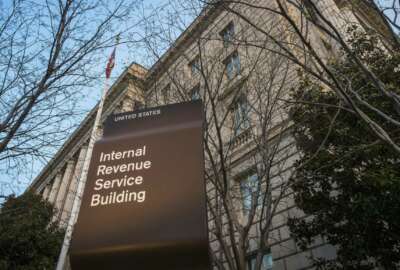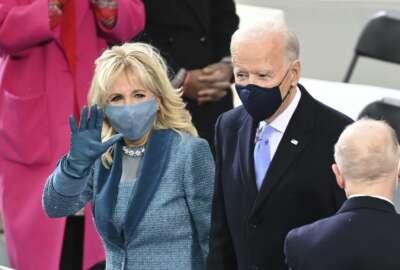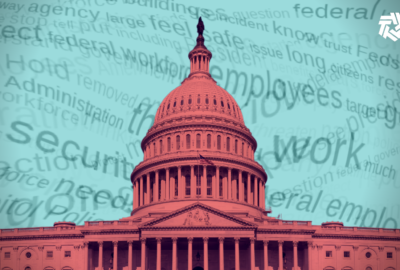
New embassy in New Delhi means a new approach too
In the latest installment in a 20 year rebuilding project, the State Department is about to embark on a new embassy in New Delhi, India. It will result in an...
Best listening experience is on Chrome, Firefox or Safari. Subscribe to Federal Drive’s daily audio interviews on Apple Podcasts or PodcastOne.
In the latest installment in a 20 year rebuilding project, the State Department is about to embark on a new embassy in New Delhi, India. More than a building, it will result in an entirely new approach in one of the most diplomatically crucial cities. With details, the State Department’s managing director for program development, Angel Dizon, joined Federal Drive with Tom Temin.
Interview transcript:
Tom Temin: Mr. Dizon, good to have you on
Angel Dizon: Thanks.
Tom Temin: Tell us about this project. It’s a combination of new and refurbishing the old and redoing the site. Give us a sense of the scope of what’s going on there in New Delhi.
Angel Dizon: Sure, it’s a wonderful project. So the original building was built in the late 60s. And obviously, it’s lived this life for a long time and sort of set the foundation for what our diplomatic relations with the Indians was. And so it’s a 20 acre site over two campuses in the Chanakyapuri neighborhood. And so the existing campus has a chancery, it has a chief of mission residents, it has a extra office annex. And then it’s actually one of the special places that has a lot of housing on it. So a lot of diplomats that come there live and work on one of those two campuses. And so our project, the new project, is really taking a building that was built in the 60s that doesn’t meet all of our sort of performative and functional requirements and is looking to add new buildings like a new chancery, a new support annex with some offices and some new residences. And then the second phase of the project will then be to renovate the culturally significant property that was the existing chancery
Tom Temin: And just for definitional purposes, what is a chancery?
Angel Dizon: So the chancery is the is the sort of main administrative building on any embassy campus. It’s the representational and symbolic building where all those diplomatic efforts happen. So when you are looking around the news when they’re when they’re shooting an image of an embassy, that’s the main building, also known as the chancery.
Tom Temin: And the building that exists there now is also architecturally significant?
Angel Dizon: It is, it’s super significant. It’s actually on the secretary of Interior’s culturally significant properties list. But it was designed by a very famous architect, Edward Durell Stone, and he actually designed that building and masterplan, the two campuses. And it is kind of a time when we were putting our best foot forward in the world and using these facilities to represent what we believe democracy to be. And so it’s designed in the sort of international style, very open, and it’s translating all these different kinds of, I don’t know, all these different kinds of building types that exist in India and translating them into a modern way with obviously an American sort of overlay to represent us. And it was actually very well received in India, obviously, on our secretaries register, very, very important building in our portfolio.
Tom Temin: So that building will remain, but it will get some enhancements after the new chancery and after the other things you mentioned are built.
Angel Dizon: That’s exactly right. And you can imagine a building that’s built in 59, it just doesn’t perform the way that we want. So anybody that lives in a house that’s from the 50s or 60s knows what I’m talking about, where it’s a little drafty and in fact the buildings actually designed with a big open courtyard. So if we look at the kinds of requirements that were required then, they’re very, very different with they are today, especially around security. And so the building doesn’t meet any of those sort of physical and technical security requirements that we really require for the buildings that we build today. And so the buildings gonna look the same, but it’s going to get these kinds of enhancements that provide that kind of security that we’re looking for. But then it provides all these other other kinds of utilities and functions that I think a modern office building of today requires, a different than a building of that time.
Tom Temin: And you’ve chosen a fairly well known and avant-garde firm to do this new project, and that involves some landscaping also. The company describes itself as urbanists that deal with not just the building itself, but the surroundings also.
Angel Dizon: That’s right. Weiss/Manfredi is the architect for this particular project. And they are a wonderful firm out of New York. And the reason why they were selected is they do have a sensitivity towards these historic buildings. And what’s unique about New Delhi is because it’s spread over two campuses, people are working and living on there. There’s a lot of development constraints, they’re imposed by the city where you can’t, there’s a minimum amount of sort of coverage on the land that you can put on there, very specific building heights that you have to stay below. And so what you really needed in this particular case, if someone can be sensitive to all of those things and create one big cohesive campus for the deployment.
Tom Temin: And just looking at the Weiss/Manfredi site, they show a building that it looks like a miniature version of the Kennedy Center. Is that the existing building?
Angel Dizon: You’ve got a good eye there. Right. So yeah, so Edward Durell Stone, designed both the embassy in New Delhi and the Kennedy Center. The embassy in New Delhi was first. And so what ended up happening, it’s a really kind of a cool story, is Jackie Kennedy is going out to visit the embassy in Delhi, sees this building, is absolutely overwhelmed that how representational it is, how efficient it is, and just how it spoke to her. She said, I want this for my cultural center in DC. And so he’s commissioned then to do the Kennedy Center. And it takes a lot of the same kind of vocabulary from the embassy building to the Kennedy Center here in DC.
Tom Temin: Yeah, and of course, as we know, in the history of the Kennedy Center, it’s had some performance and functional problems too. But I think they’ve got that up to date now too.
Angel Dizon: Yeah. When buildings get old, he need to go in there, there has to be some interventions, so that it performs the way that you need to today. I mean, think about the way that people worked back then and the way that the kind of technology or lack of technology they had back then, it’s just a different kind of time. And so it requires a different kind of building.
Tom Temin: And just describe briefly the process by which the State Department chooses an architect. Cause you’ve got 50 more to go in this 20 year redoing project, so far 20 years of building new embassies for security purposes. How do you pick the outfits that are going to do the design?
Angel Dizon: We’ve been doing this for about 20 years, and we probably have another 30 years ago, because we have 291 of these missions to do. So the way that we do it is when we we put out a solicitation for an indefinite delivery, indefinite quantity contract, so that IDIQ, and essentially what we do there is we put out a solicitation so that you can be a part of that stable of architects. And what ends up happening is that we compete them, and then we identify the ones that are most appropriate for our program. And then we make sure that they are clear to the secret level so that they can work on these kinds of projects. Now after that, in this particular case, we had a stable of 10 architectural and engineering consultants. And then we have a architectural engineering selection committee inside the bureau that makes the selection for the right architect based on the kinds of challenges that we’re seeing on that particular project. And in this case, Weiss/Manfredi just had all the right kinds of attributes to be the appropriate architect for this. And they proven out to be so. In fact, the way that this project started was just a little bit of a study, we wanted to understand what was the right way to manage the land, and manage all the existing buildings in there. And so when they actually did a master plan, and one of the things in New Delhi is property value there’s a very, very high, then there’s all these different kinds of constraints. So not unlike that you would do on in a big portfolio, we just had to manage that effectively. And New Delhi is one of the large mega cities. And so how do Americans really develop properties that they own in those countries so that they meet our requirements, and are sensitive to the kinds of mega city challenges that exist.
Tom Temin: Yeah, New Delhi, I think has 21 million people. It’s just gigantic.
Angel Dizon: A bit more than DC, and I’ve been there a few times, be thankful that we have DC traffic, by the way. But it’s tough, it’s tough there. And then also in a lot of places that we work, there’s different kinds of, obviously political challenges, different kinds of security challenges. And then in Delhi, there’s a lot of environmental challenges. The air pollution is very tough there. And so one of the things that we did in our project is really introduced a whole lot of new tree plantings, almost 2,500 tree plantings, some on campus, some outside, to help sort of manage some of that. But there’s a whole host of different kinds of environmental things that we’ve done as a part of our project. I think, A, to be good neighbors in that city, but also to be more independent from the host nation from security perspective, as it relates to water and energy.
Tom Temin: Sure. I guess, Old King George the fifth would have been surprised at what that city grew up to be. What will you be spending on all of this? It sounds like you’ve got pretty steady congressional support.
Angel Dizon: Yeah, you know what, we’ve been, we’ve been very fortunate. I think every time Congress has looked at our program, regardless of which administration’s there and regardless of which party, they’ve seen value in protecting our diplomats overseas, and so it’s been funded consistently. So we’ve had a sort of active program since around around 2000-2001. And we started off, I think we’re getting about $800 million a year. And now we get almost $2.5 billion a year to execute these new projects. So in New Delhi, the construction contract was awarded right at about $516 million for both campuses.
Tom Temin: Alright. We should also add, even though you have the title of Program Development Managing Director, you are an architect yourself, correct?
Angel Dizon: I am. I was trained that way. I don’t know if that’s good or bad. But what I really appreciate about my training and the role that I have here is you really see the value of what architecture can be for people that work there or experience it. And it’s not unlike the buildings that we have in DC. Sometimes we don’t go in them. But it’s a part of our life. Right. It’s it’s part of our experience. In public buildings, civic buildings, especially government buildings that represent the US government, it’s important that those buildings not only represent us well, but then also are able to be something of an inspiration to the people that work there. What you have to imagine is in these embassies and consulates that we have, 75% of that population is local people. 95% of the visitors are local. So it really is a symbol of who we are and what to expect out of America. So I find it to be really, really important. I think having an architecture background helps to make sure that’s kind of always front of mind. But the fact of the matter is, the reason why we do these buildings is we need to make sure that we secure our deployments overseas.
Tom Temin: But you don’t get to make a little sketch on the blueprints yourself though, do you?
Angel Dizon: That’s why we hire the best American architects so that I don’t have to pick up a pen. Now our goal is to really hire the best architects and engineers in the United States. And then we guide them with what I think are, as a bureau, we are experts in embassy designing construction, so we know what is expected. We just guide the the architects on what the challenges may be. And ultimately, what we’re looking for them to do is represent us well and make sure that these buildings are safe, secure, functional and resilient.
Tom Temin: Angel Dizon is managing director for Program Development, Coordination and Support at the State Department. Thanks so much for joining me.
Angel Dizon: Thanks so much Tom. I really appreciate it.
Copyright © 2025 Federal News Network. All rights reserved. This website is not intended for users located within the European Economic Area.
Tom Temin is host of the Federal Drive and has been providing insight on federal technology and management issues for more than 30 years.
Follow @tteminWFED





